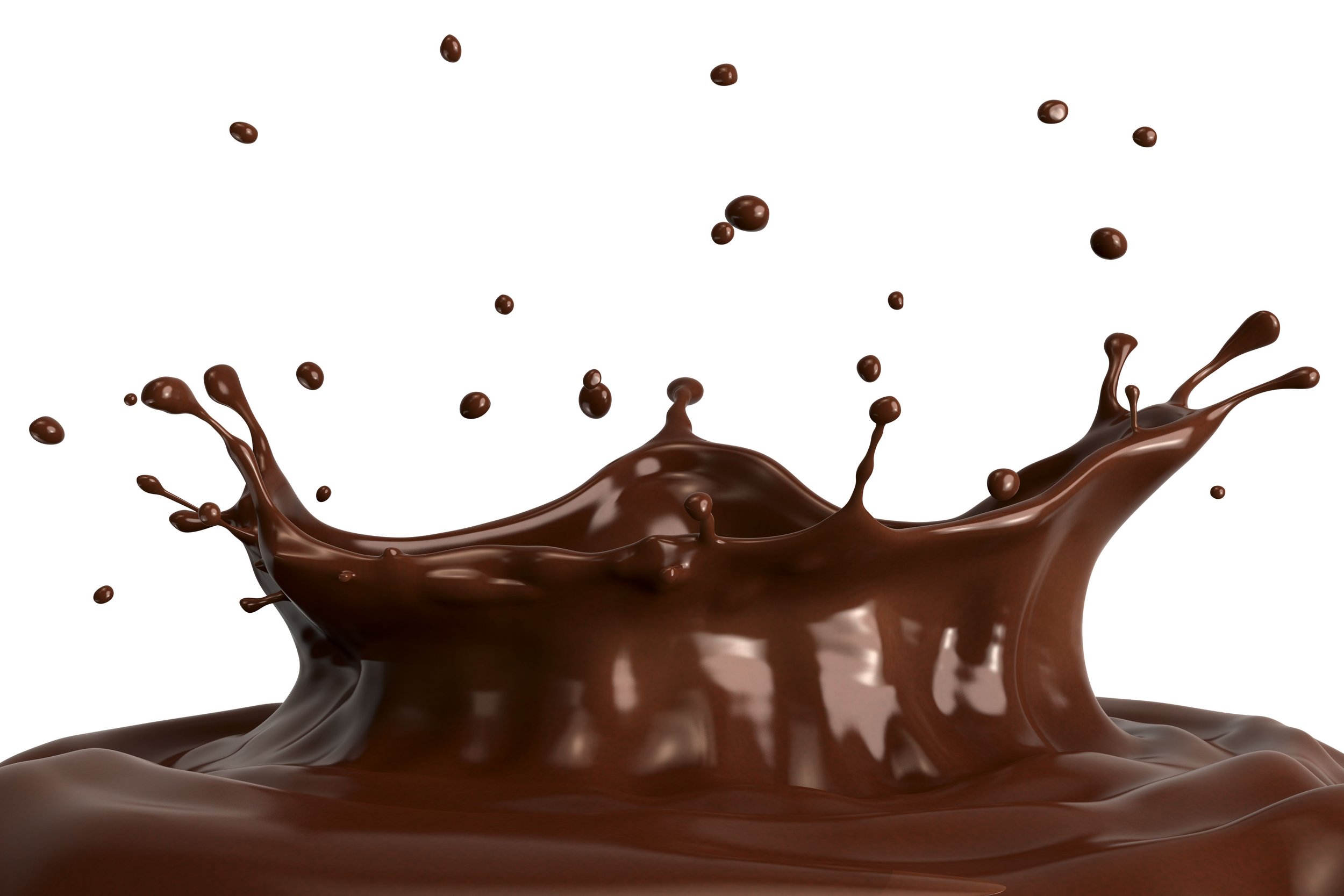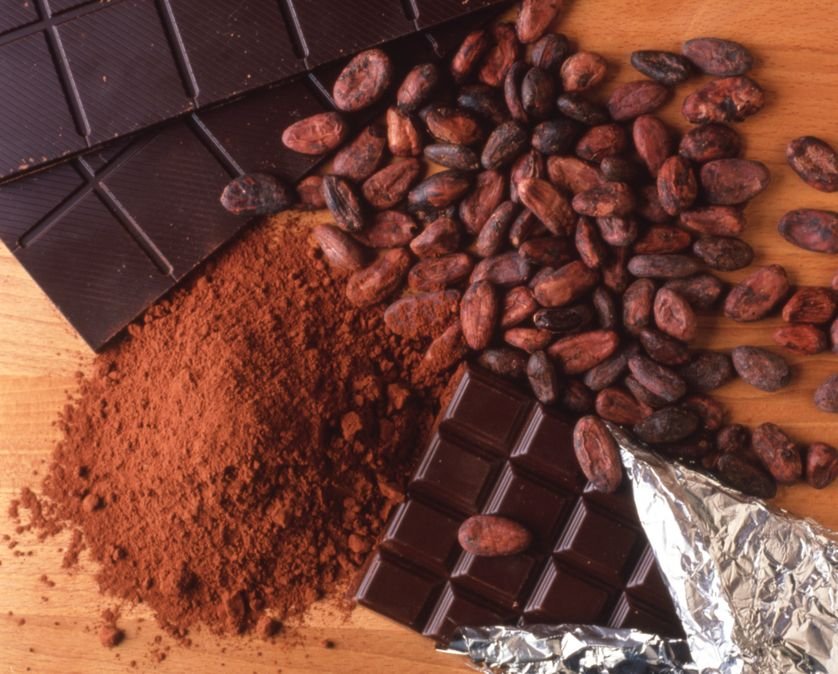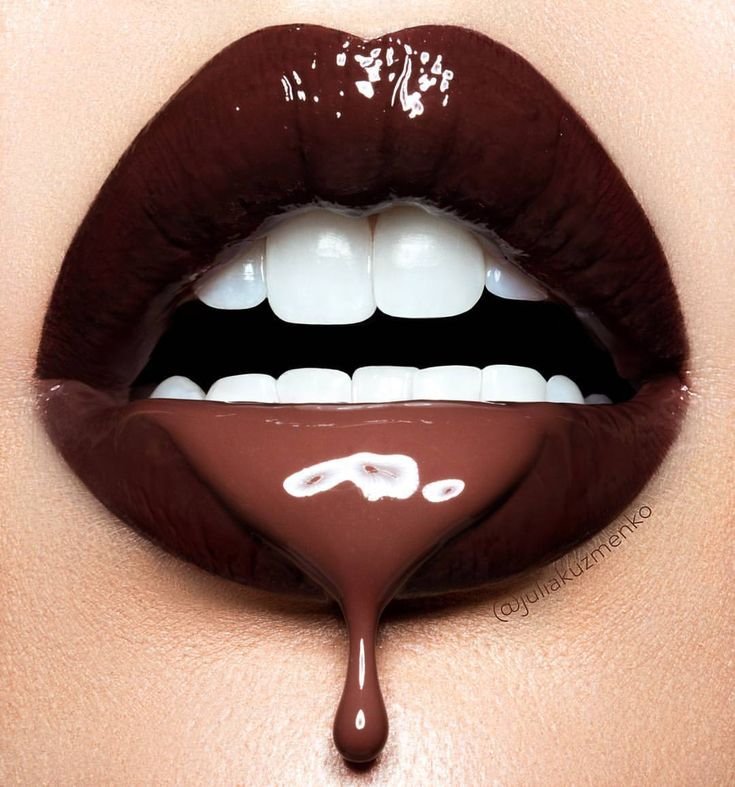
the chocolate jones
by Victoria Thomas
First, A confession.
When I was six, maybe seven, my artist mother made me an all-white Easter basket. She had spray-painted the basket itself white, glitzed with a quick spritz of metallic silver sparkles. The jellybeans were vanilla and coconut, and the handsome bunny that sat in a snowy drift of shredded typewriter bond was the color of ivory.
I burst into tears the moment I laid eyes on it. I felt gutted, heartbroken, BETRAYED, somehow.
My mother was understandably puzzled. Although it’s been decades since I had an Easter basket, I remember that wrenching ache at the sight of it. It all seemed WRONG. An Easter bunny needed to look a certain way, and taste a certain way, to make the Easter magic (the Resurrection? Not sure--) happen. Eventually, I did munch the ears off the milky imposter, and it indeed tasted wrong, more like a pat of butter (or maybe a perfumed candle) than my favorite sweet of the year.
Today, chocolate fanciers may still bicker over whether white chocolate even qualifies as chocolate at all. The reason: white chocolate contains zero cocoa solids, the ingredient which gives milk and dark chocolates their delirious flavor and fragrance, and zero chocolate liquor (non-alcoholic) which gives chocolate its deep color. What it’s gotta lotta: cocoa butter. Yup, pretty much the same stuff you slather on those dry elbows. Prior to 2002, the FDA would have classified my albino bunny as a “confection” rather than chocolate, but pressure from the Hershey Foods Corporation and the Chocolate Manufacturers Association changed the standard to become more lenient. Today, cheaper white candies swap vegetable oil for the cocoa butter altogether, exiling them from the realm of true chocolate.
The world’s appetite for chocolate is apparently insatiable. Coincidentally or not, the voracious global market mirrors The Chocolate Effect that many chocolate-lovers experience personally: one taste can easily lead to a fugue-state binge, as anyone who’s ever shot gunned a party-size bag of Milk Duds (guilty!) or a can of Hershey’s Syrup (“Black Lightning”) a-la Elvis can attest. According to Mordor Intelligence, Compound Annual Growth Rate (CAGR) in the cocoa sector will climb 4.5% over the next five years.

And this is why “mockolate”-- fake chocolate-- happens. Declining supplies and rising prices contribute to the use of fillers in mass-market chocolate, some of which fail to meet the FDA’s minimum requirement of 10% cocoa needed to call a product “chocolate” If one reads the packaging of many Hershey favorites closely, the words “chocolate candy”, “chocolatey” and “made with chocolate” are used, sufficient for the lawyers to greenlight the tons of, may we say, extremely cheap candy that makes its way into millions of Valentine’s heart boxes, Easter baskets and trick-or-treat bags each year. A conservative estimate: Americans spend $20 billion each year on chocolate, or something resembling chocolate.
Los Angeles-based chocolate-whisperer Jonathan Grahm, owner of Compartes, shudders audibly through the phone when the topic of cheap, nasty mockolate. “Listen, what people want more than anything else is authenticity. And after years of COVID, we want it, we all crave it, more than ever,” says Grahm, whose handmade, wildly creative confections are snapped up by candy connoisseurs at more than 3,000 locations worldwide. “People want genuine, unique, authentic experiences, so I create real stories around every bite. They’re a reflection of my own experiences and childhood dreams. For instance, I loved Animal Crackers as a kid, so those are the basis of our Pink Elephants bar. The personal connection makes a great piece of chocolate something to share and bond over, and that’s literally what ‘Compartes’ means.”

As for originality and authenticity, consider this: for his best-selling Donuts & Coffee bar, Grahm drives all over Los Angeles buying his favorite donuts (and rewarding himself with a warm, glazed donut en route). Back at HQ the fresh, warm donuts are then torn up and added into the mixture to make the bars. “It’s not like we use artificial Essence of Donut extract or whatever,” he says, “I mean, is there even actually such a thing?” His Los Angeles roots are often evident in his confections, from the Churros y Horchata milk chocolate bar and Avocado Toast bar to the California Love dark chocolate bar, the latter packaged in a pink palm-tree wrapper.
Grahm sources ethically and buys the highest-quality fair trade ingredients available.
Grahm’s family owned Compartes, and he worked in the shipping department when he was 15 years old. At 19, he began creating his own recipes, and a few years later left law school, took out a loan, and bought the shop from his parents. The original shop was in Grahm’s own words, “…a dusty old chocolate shop with stuffed animals and greeting cards, like a boardwalk chocolate shop.” Today, Grahm is sought out by trendsetters and thought-leaders and asked to create limited edition chocolates which become overnight collector’s items -- to wit, the Red Velvet Cake bar he created for the launch of “Being the Ricardos.” He recalls, “As a kid growing up in Los Angeles, I loved watching ‘I Love Lucy’ with my grandma Ruthie, who knew Lucy, as was a redhead herself. They both lived on Roxbury, and they called themselves the Roxbury Redheads, so the Red Velvet Cake was a natural choice.”
The intensely personal nature of Compartes chocolate is the key to understanding the thrall that chocolate holds over uncounted billions of chocolate fanciers. Bear in mind that cacao is not sweet, and contains no natural sugars. At the very least, chocolate-makers add sugar, milk, cream and butter as the basis for what we today recognize as a modern chocolate. Makers of lower-quality chocolate swap vegetable oil and high fructose corn syrup for the more expensive ingredients. Then a kaleidoscope of flavorings, beginning with vanilla, extend the flavor profile far and wide.
So the magic of chocolate is far more than a mere sugar-buzz. It’s more than the smidge of caffeine present. And it’s more than the silky, fleshy mouthfeel of butterfat, like that delivered by a spoonful of ice cream. The alchemical properties of chocolate lie in the cacao, explaining why chocolate -- not, say, gummy worms -- wields such power in the realms of neural reward, pleasure and sometimes danger and punishment as well, beginning in childhood. The sensation is due in part to the fact that chocolate stimulates an especially reactive nerve fiber called Krause’s end bulb. Consider for a moment both movie versions of “Willie Wonka and the Chocolate Factory”, where greedy children drown in vats of bubbling chocolate, and the Ken Russell classic, “Tommy”, where Ann-Margret body-surfs in an orgasmic tsunami of liquid chocolate erupting from her shattered television set. New York Mayor Eric Adams recently proposed banning chocolate milk from the menus of his city’s public schools; I predict an armed uprising should this come to pass.


For the past few decades, urban myth has maintained that chocolate is powered by the same alkaloids present in cocaine, as if the two substances share a botanical source. It isn’t, and they don’t. They’re made from entirely different plants. And yet, for centuries, psychoactive, even superhuman, effects have been ascribed to anything touched by cacao. No wonder chocolate was issued to American GIs during WWII as part of every soldier’s ration kit, intended as an emergency food source. Standard military issue often included sturdy, chewy Tootsie Rolls, which are only nominally chocolate, since better chocolate melts at 90 degrees F, or even lower. And of course, the sweets also came in handy for enlisted men desiring to introduce themselves to local women.
Chocolate, like music, is a nearly-universal language of love. The latest incarnation: Tik-Tok darling TABS, which blends 60 per cent cocoa with epimedium, maca root and DHEA, all purported to spike libido.
It is a fact that both cocaine and cacao cause the brain to release floods of dopamine, everyone’s favorite neurochemical. The experience is both pain-numbing and euphoric. And although daily consumers of chocolate may self-describe as “chocoholics,” cacao is not chemically addictive in the clinical sense. There’s no arguing, however, that we may form strong psychological attachments to The Chocolate Experience, often beginning early in life -- witness my ugly-cryin’ jag triggered by the betrayal of the white chocolate Easter bunny so long ago. It’s glossy. Sexy beast, chocolate melts on contact with human skin. And it instantly hijacks even the foulest humor into a state of giddiness.
Aztec, Mayan, and Toltec civilizations cultivated the cacao plant more than 3,000 years ago. Not only did they consume it: cacao, along with gold, turquoise and jade, was offered as a sacrament to honor the dead. The origin story goes that the god of air and high places, Quetzalcoatl, brought cacao seeds to earth from heaven. As with Prometheus on the other side of the planet, this gift irritated the other dieties, so the glyphs say that the gods flayed Quetzalcoatl and forced him to wander the cosmos as a disembodied ghost. The only plus: he promised that he’d return, and this belief may have played a role in the apparently warm reception received by Hernan Cortes, who was greeted as the earthly incarnation of the feathered serpent himself. Montezuma and his court drank the indigenous ancestor of modern chocolate to honor Xochiquetzal, feather-flower goddess of love. Their bitter, unsweetened brew was prepared by first drying, roasting and grinding cacao beans which were then pressed into cakes spiked with red peppers and chilis. The cakes were crumbled and mixed with water, latl being the Nahuatl word for water, and choco-choco-choco being the onomatopoeiac sound of the mix being whisked up in a bowl. As for the word “cocoa,” it arose from the European confusion between the cacao tree and the coconut palm.
The pre-contact glyphs report that more than 2,000 cups -- gold chalices, in the case of El Jefe Montezuma himself-- were consumed daily by the Aztec nobles. The explanation provided was that Montezuma needed plenty of giddy-up, since he partnered with multiple wives and a reported 700 concubines. (Elon Musk and Nick Cannon, the reading room is open.) Adding further value, the beans were also used as currency when they weren’t pressed into service as the royal aphrodisiac.
Later accounts credit a Mexican princess named Donna Marina with unleashing the secret of chocolate on her Spanish captors. Cortes ferried an initial stash back to Spain in 1521, where it was far from an instant hit.
Soon after, when Portuguese pirates captured Spanish ships, they tossed the chocolate cargo overboard, calling it cacuro de carneo (sheep droppings). Wild stories flourished, including the claim that Mexican brujas (female shamans) used the beans in their bewitchments, using the brew as a means to contact Satan.
Things changed around 1550, when a convent of cloistered nuns in Chiapas added other powerful stuff -- another indigenous treasure, vanilla, along with imported, pricey sugar, then cultivated only in India and other parts of South Asia -- to the mixing bowl. Other accounts record vanilla, which the Azteca called “the black flower,” being added to the potion much earlier, including the first steaming cup offered to the Conquistadores. In any case, by the reign of Elizabeth I, Mexican vanilla also became a coveted ingredient in Europe, followed soon after by a vanilla craze in the colonies; Thomas Jefferson was a fan. By the mid 1650s, chocolate houses abounded in England, and a 1712 issue of the Spectator, which advised young ladies who wished to remain chaste to “be careful how you meddle with romance, chocolates, novels, and the like inflamers.”
Like so many beautiful things, cacao starts out ugly. A typical pod holds 30 to 40 beans held in a frankly stinky pocket of slime which burns the skin on contact. Pickers slice off the pods with steel knives attached to long poles, then split the pods open and use wooden paddles to spread the gelatinous contents onto a flat surface to cure. Prior to mechanization, the curing was accomplished by sun-drying. The initially pale beans take on hues from lavender to violet to deep brown as they ferment. As with other plant products, the drippings from the curing beans are often enjoyed as an intoxicant.
Our escalating global lust for chocolate proves problematic, in that cacao is not currently a sustainable crop. Brazil is the source for Criollo cacao, deemed the highest quality, but Criollo accounts for only a tiny percentage of cacao which enters the market. Much of the water-hungry cacao grown in drought-stricken West Africa, the primary source for the raw goods, comes at a high human as well as environmental cost. In Ghana and the Ivory Coast, for instance, much of today’s cacao is picked by more than one million children, frequently including victims of kidnapping and human trafficking.
A 2019 California lawsuit, Hodson v. Mars, Inc., ruled that although forced child labor is reprehensible and violates international labor standards, Mars, Inc., the manufacturer of M+Ms, Milky Way, Dove Bars, 3 Musketeers, Snickers and Twix, isn’t violating labeling laws by failing to disclose that child slavery is used to produce its candies. Add to this that the cacao plantations themselves are often comprised of aging trees which yield less and less with each harvest. Expansion of cropland would lead to deforestation, although The World Cocoa Foundation and partner organizations are scrambling to find ethical alternatives to meet the growing demand.
This just in as Soolip goes to press: Hershey brand spokespeople are warning consumers that trick-or-treaters may face a potential shortage of Reese’s Peanut Butter Cups and Kit Kat bars among other favorites this coming Halloween. While market experts are optimistic that shelves will be sufficiently stocked, such news does strike fear into the bittersweet heart of chocophilia.
As the holidays approach, social platforms begin to swarm with tortured first-person accounts of tangling with chocolate as a relentless demon-lover who melts even the most high-minded self-control like a square of the good stuff on the tongue. Although jonesing for chocolate doesn’t qualify as a true addiction, there’s no doubt that for some, it’s a genuine obsession. There’s a bit of comfort in the purported antioxidant qualities of dark chocolate, but who are we kidding? We do it for the pure pleasure. In this context, that choco-rush is life-affirming, as innocent as childhood. The long-running television ad campaign for Dove Chocolate got it right with the selection of the Edith Piaf 1960 classic, “Non, Je Ne Regrette Rien” : “No, I do not regret anything.”
All images courtesy of Wikimedia Commons.



